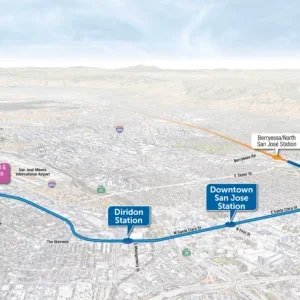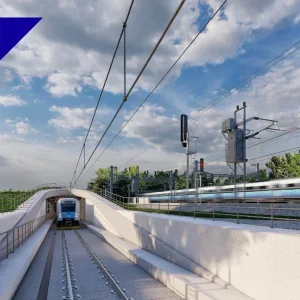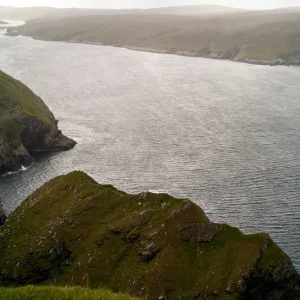Localised ground conditions are now being blamed for the failure of a 15m section of a sewage tunnel in Hull, UK last November (T&TI January).
The failure occurred when Miller Civil Engineering had driven 8km of the 10km long tunnel using a Lovat earth pressure balance TBM.
Precast concrete tunnel lining segments distorted, causing sand and silt to seep into the excavation. Tunnelling had been going well in the wet ground, and at the time of the failure the contractor was 12 weeks ahead of schedule.
The problem occurred 150m behind the TBM, and a further 2.5km of the tunnel was affected by debris. Remedial work is under way to recover the machine and rebuild the damaged section of 3.6m diameter tunnel.
Miller is using an existing 7.5m ID construction shaft (T3) for access and to apply ground freezing to 115m of the tunnel. Failure happened just a few metres to the east of the shaft.
Immediately after the failure Miller stabilised the tunnel by applying compressed air at a bulkhead in a shaft (T4) 2.5km east of the collapse. Over the subsequent weeks air was lost through the ground, so the contractor filled the section of tunnel between shaft T4 and the TBM with water.
In the first stage of recovery two vertical frozen bulkheads were constructed on the line of the tunnel portals in shaft T3. The shaft was then excavated to remove the debris that filled it during the collapse.
The frozen plugs were then replaced with sprayed concrete bulkheads.
Two additional frozen bulkheads have been installed at 20m spacings on the west side of T3 and a further three at 25m spacings to the east.
Construction of these plugs enabled Miller to drain the 2.5km section of tunnel west of shaft T4, and to clean it and assess its condition. It is structurally sound.
Now all the frozen bulkheads are in place, Miller is installing horizontal freeze pipes to encircle the 115m length of tunnel. Once they are in place and the freeze applied, the vertical freeze will be removed, and the contractor will excavate through the damaged section and rebuild the tunnel.
By the end of this month access should be gained to the damaged section to confirm the cause of the collapse – thought to be localised ground conditions.
Once the damaged section has been rebuilt, the length of tunnel behind the TBM will be cleaned out, and the machine repaired. A new shaft has been sunk 50m ahead of the trapped machine so it can be recovered.
The stranded TBM, called Maureen, had just 2km of tunnel left to dig. A second machine, Gloria, was brought in to complete this drive after finishing another 5km section of the tunnel.
Client Kelda (formerly Yorkshire Water) is hopeful both machines will be out of the ground by November, and construction will be completed in time for commissioning before the end of the year. The tunnels are part of the £200M ($303M) Humbercare wastewater treatment project, which is needed so the water company can meet EU water quality standards by the deadline of 1 January 2001.
Miller’s tunnelling contract was originally priced at £53M ($80M), but out-turn costs have already reached over £70M ($106M) and are expected to rise.
The contractor is working to an IChemE ‘green book’ cost reimbursable contract, but no agreement has been reached about who pays the additional costs resulting from the collapse.
Related Files
Route map







